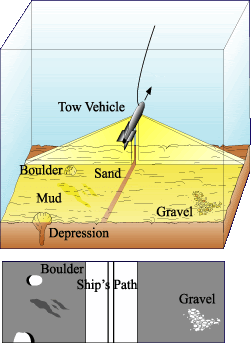"Because of the mixture of species found, and the fact that some of them were entangled in sections of fishing nets, it is likely that these animals were killed as bycatch," said Jean-Christophe Vie, deputy coordinator of the World Conservation Union's species program, based in Gland, Switzerland.
Bycatch is a mix of young or low-value fishes, seabirds, marine mammals, and sea turtles, often considered worthless and tossed overboard—dead or dying.
Collateral Damage
The collateral damage amounts to about 30 million tons (about 27 million tonnes) of sea life each year, says marine ecologist Jane Lubchenco of Oregon State University—about one-third the total global catch. Among the worst offenders are shrimp trawlers, who often discard up to 10 pounds of sea life for each pound of shrimp they catch.
"If a hunter is hunting for elk, he's not killing sparrows, eagles, coyotes, and pronghorn," said Elliott Norse, president of Marine Conservation Biology Institute (MCBI) in Redmond, Washington. "That's different in the sea. We fish blindly—and it's an exceedingly wasteful way of doing things."
A recent barrage of scientific reports detail alarming declines in many fish and other marine animal populations. One of these, published in the journal Nature, states that just 10 percent of swordfish, sharks and other large, predatory fish remain in the world's oceans after just 50 years of commercial fishing.
Without immediate action, they could go the way of the dinosaurs, warns study author Ransom Myers, a fisheries biologist from Dalhousie University in Hallifax, Nova Scotia.
High-Impact Fishing
Bottom trawling inflicts the most damage on the undersea environment, according to an MCBI report funded by the Pew Charitable Trusts titled "Shifting Gears." Trawlers drag weighted nets up to a quarter-mile wide along the ocean floor, bulldozing deep-sea coral reefs and other seafloor ecosystems where many sea animals live or breed. It is the equivalent of clear cutting forests to hunt deer, said Norse.
The study also classified gill nets and longline fishing as "high impact". With these methods, "you're catching and killing everything that swims by," says Daniel Pauly, a marine biologist at the University of British Columbia. (all info from Nationalgeographic.com)









